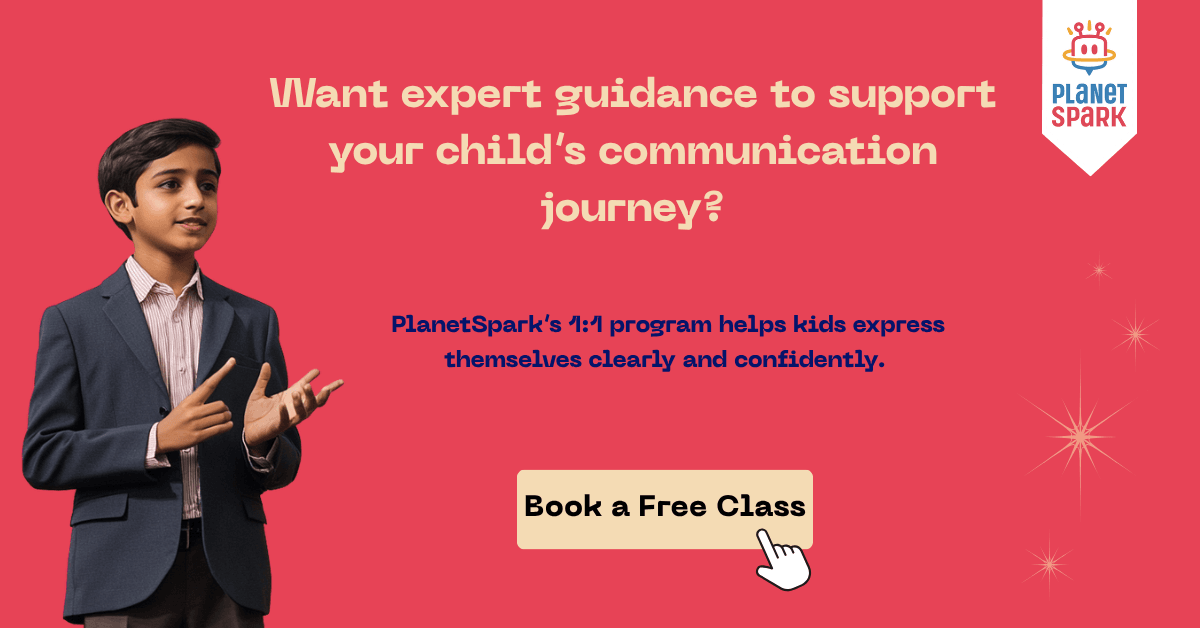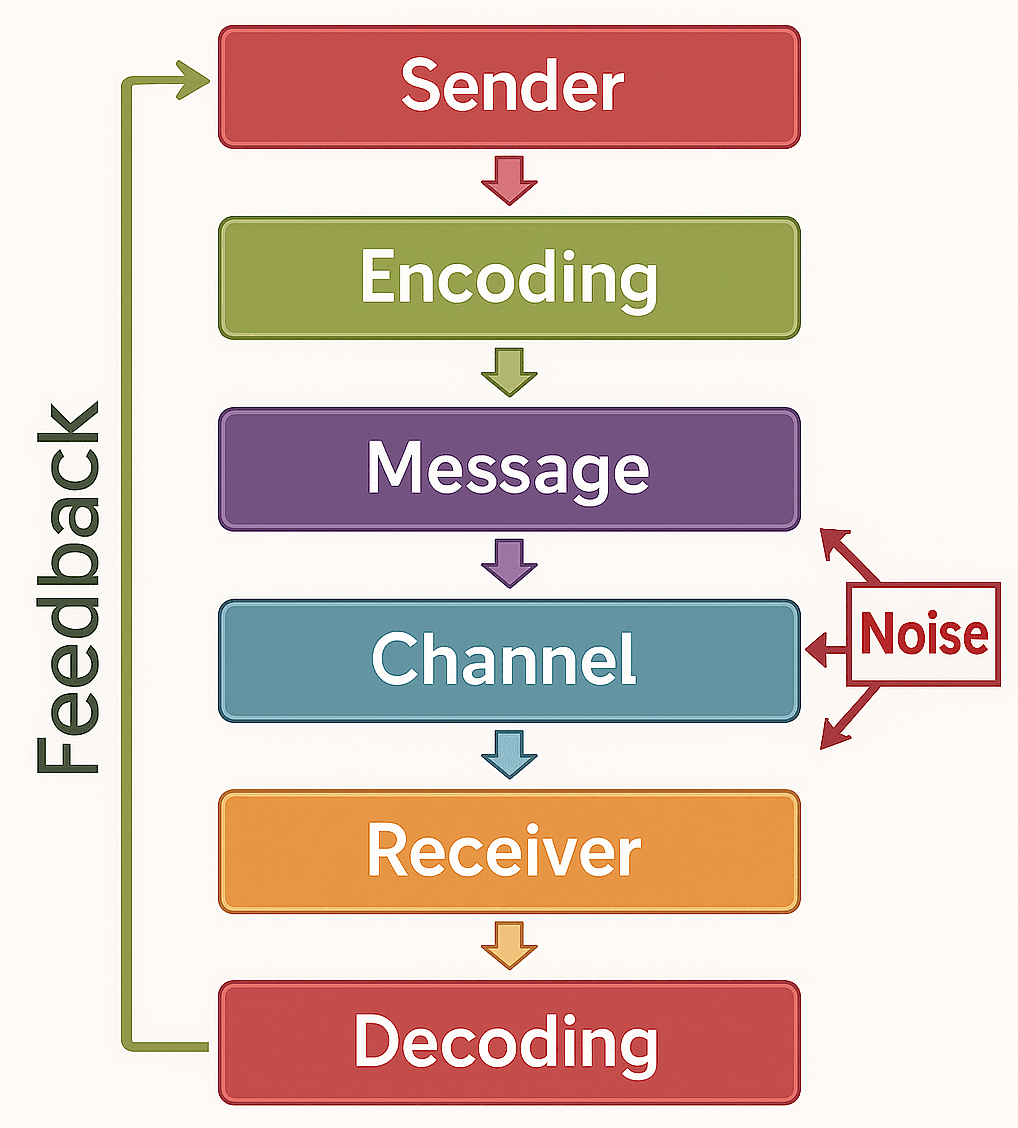Step 3: Message
The Actual Content Being Shared
The third step in the 7 steps of the communication process is the message. This is the actual content that the sender wants to deliver to the receiver. It could be spoken words, written text, a picture, a gesture, or a combination of all of these. The message carries the idea that was formed and encoded in the earlier steps.
This step might seem simple, but it is at the heart of the entire communication process. If the message is unclear or poorly delivered, it can lead to confusion, misunderstandings, or even conflict.
Key things to know about the message:
It reflects the sender’s thoughts, feelings, or intentions
It can be verbal (spoken or written) or non-verbal (facial expressions, tone, body language)
It needs to be clear, concise, and appropriate for the listener
Example:
A child who feels hungry and has already decided how to express it says, “Can I eat now?” That question is the message. It delivers the child’s idea in a way that can be heard and understood.
The message is the visible or audible form of communication. When children learn how to shape their messages clearly, they improve their ability to express themselves in everyday situations.
Step 4: Channel
The Path the Message Takes
The fourth step in the 7 steps of communication process is the channel. This refers to the method or medium through which the message travels from the sender to the receiver. It is the path that connects both people and carries the message between them.
The channel can be anything that allows communication to happen. It could be a face-to-face conversation, a phone call, a video, a written note, or even a hand gesture. Choosing the right channel is important because it affects how well the message is received.
Important things to understand about the channel:
The channel should match the situation and the type of message
It can be verbal (spoken or written) or non-verbal (body language, facial expression)
A poor channel or the wrong method can cause confusion or delay
Example:
If a child says “Can I eat now?” to a teacher directly, the channel is spoken language in a face-to-face setting. If the child had written the question in a note instead, the channel would be written communication.
The choice of channel influences how clearly and quickly the message is received. For children, learning to choose the right channel builds awareness and helps them become more thoughtful and effective communicators.
Step 5: Receiver
The Person Who Gets the Message
The fifth step in the 7 steps of communication process is the receiver. This is the person for whom the message is intended. The receiver listens, reads, or observes the message and then tries to understand what the sender wants to say.
The success of communication depends not only on how well the message is sent, but also on how well it is received. The receiver needs to be focused and willing to understand the message in order for communication to be complete.
Key aspects of the receiver’s role:
They must pay attention to the message
They interpret both the words and the body language used
Their background, emotions, and mood can affect how they understand the message
Example:
In the classroom, when a child says “Can I eat now?” the teacher becomes the receiver. The teacher listens to the question and tries to understand what the child is asking and why.
It is important for children to recognise that communication is a two-way process. Being a good communicator also means being a respectful and attentive receiver when others are speaking.
Want to see real improvement in your child’s speaking and listening? Start with a free demo class!
Step 6: Decoding
Understanding the Message
The sixth step in the 7 steps of communication process is decoding. This is the stage where the receiver takes the message they have received and tries to understand what it means. Just as the sender encodes the message, the receiver must decode it to make sense of the information being shared.
Decoding is not always easy. It depends on how clearly the message was sent, as well as the receiver’s ability to understand the language, tone, or non-verbal cues.
What decoding involves:
Paying attention to the message
Interpreting the meaning behind the words or actions
Using past knowledge, emotions, and context to understand what is being said
Example:
When the teacher hears the child ask, “Can I eat now?” they decode it by realising the child is likely hungry and asking for permission. If the question was unclear or mumbled, the teacher might misunderstand it.
Teaching children how to listen carefully and understand what others are trying to say helps them become better listeners and more thoughtful communicators. Decoding is an essential part of making sure that messages are understood the way they were intended.
Step 7: Feedback
The Response to the Message
The seventh and final step in the 7 steps of communication process is feedback. This is the response the receiver gives after decoding and understanding the message. Feedback helps the sender know whether the message was received correctly and understood as intended.
Feedback can be spoken or written, but it can also be shown through actions, expressions, or gestures. It closes the communication loop and allows for clarification, encouragement, or further discussion.
Feedback helps by:
Confirming that the message was understood
Letting the sender know how the receiver feels or thinks
Allowing the conversation to continue in a meaningful way
Example:
After the child asks, “Can I eat now?” the teacher might respond with, “Yes, it’s almost lunchtime. Please wait five more minutes.” This reply is feedback. It shows that the teacher understood the question and is giving a clear answer.
Children who learn to give and receive feedback become better communicators. It helps them stay engaged in conversations and build stronger relationships through respectful and thoughtful responses.
Noise in the Communication Process
Even when all seven steps of the communication process are followed, the message can sometimes get lost or misunderstood. This often happens because of noise, which refers to any barrier that interferes with how the message is sent or received.
Here are some common types of noise that affect communication:
Physical noise such as traffic sounds, construction, or background chatter
Physiological noise like fatigue, illness, or hearing difficulties
Psychological noise caused by stress, emotions, or wandering thoughts
Semantic noise due to complex words, unfamiliar language, or jargon
Technical noise from poor audio, weak internet connection, or screen lag
Environmental noise including uncomfortable temperature, lighting, or weather disruptions
Being aware of these barriers can help children and adults communicate more clearly and confidently.

Book a Free Demo Class with PlanetSpark!
Experience how we simplify the 7 steps of communication and make learning fun, effective, and impactful.
Why Understanding the 7 Steps of Communication Is Important
Clear communication doesn’t happen by accident. Whether a child is giving a class presentation, answering a teacher’s question, or talking to friends, each exchange involves several invisible steps working together. The 7 steps of the communication process act like a roadmap, guiding how a message travels from one person to another and how it’s understood.
When children and young learners become aware of this process, they start to notice where communication often breaks down. Maybe the message wasn’t clear. Maybe the listener was distracted. Or maybe feedback wasn’t shared properly. Knowing each step helps them avoid common pitfalls.
Here’s why this matters:
It encourages kids to organise their thoughts before speaking.
It helps them choose words and tone that suit the situation.
It makes them more responsive listeners, improving classroom and social interactions.
It reduces misunderstandings and builds stronger communication habits early on.
And if you’re curious about how to make those conversations even more effective, you’ll love this helpful breakdown of the 7 Cs of communication with examples. It adds that extra polish to everything your child says.
Where Do We Use the 7 Steps of Communication in Real Life?
Understanding the communication process helps kids succeed not only in school but in everyday interactions too. Here's how each step comes into play in real scenarios:
| Situation | How the Communication Process Helps |
|---|---|
| Answering in class | Helps in quickly forming a clear thought and expressing it confidently. |
| Explaining a problem to a teacher | Encourages kids to use the right words and tone to convey concerns. |
| Group projects or teamwork | Teaches them to listen actively, share ideas clearly, and collaborate. |
| Telling parents about a school event | Trains them to organize information and speak with purpose. |
| Making new friends | Builds confidence to initiate conversation and respond mindfully. |
| Participating in competitions | Sharpens all steps from idea formation to feedback handling. |
Looking to go beyond the basics? This complete guide to communication skills offers deeper insights and practical tips to help your child communicate with confidence in every situation.

What PlanetSpark Offers
PlanetSpark offers comprehensive programs designed to nurture effective communication skills in children. With a structured curriculum and engaging activities, we help young learners build confidence and express themselves clearly in every setting.
Instructor-led live classes with interactive learning
Focus on listening, speaking, and non-verbal communication
Practical exercises like storytelling, debates, and role-play
Personalised feedback and progress tracking
Engaging projects that apply communication in real-life contexts
Safe, encouraging environment for self-expression
Whether your child is shy, talkative, or somewhere in between, PlanetSpark helps them become confident communicators, ready to thrive in school and beyond.
Conclusion
The 7 steps of the communication process are more than just a theory, they form the foundation of how we share ideas, connect with others, and make ourselves understood. When children learn to apply these steps consciously, they begin to navigate conversations with confidence and clarity. From classrooms to playgrounds, and later into careers, these skills grow with them.
By practicing each step and recognising the role of feedback, noise, and clarity, kids can become more mindful communicators. And with the right guidance and opportunities, every child has the potential to shine through effective communication.
FAQs
1. What are the 7 steps of communication process?
The 7 steps of communication process include: sender, encoding, message, channel, receiver, decoding, and feedback. These steps work together to ensure information is clearly shared and understood.
2. Why is it important to follow the 7 steps of communication?
Each step plays a vital role in reducing misunderstandings. Following the 7 steps of communication process ensures your message is delivered accurately and received with clarity.
3. Can children learn the communication process effectively?
Yes, with age-appropriate guidance and practice, children can easily grasp the communication process. It helps them improve listening, speaking, and interaction skills in daily life.
4. What is the role of feedback in communication?
Feedback completes the communication loop. It helps the sender know whether the message was understood and allows for adjustments or clarification if needed.
5. How can noise affect communication?
Noise refers to any barrier that distorts or interrupts the message. It can be physical, psychological, or semantic, and may lead to confusion or miscommunication if not addressed.
6. How can PlanetSpark help improve my child’s communication skills?
PlanetSpark offers interactive classes focused on communication skills. Through structured lessons and real-life speaking practice, children learn to speak confidently and listen actively.



